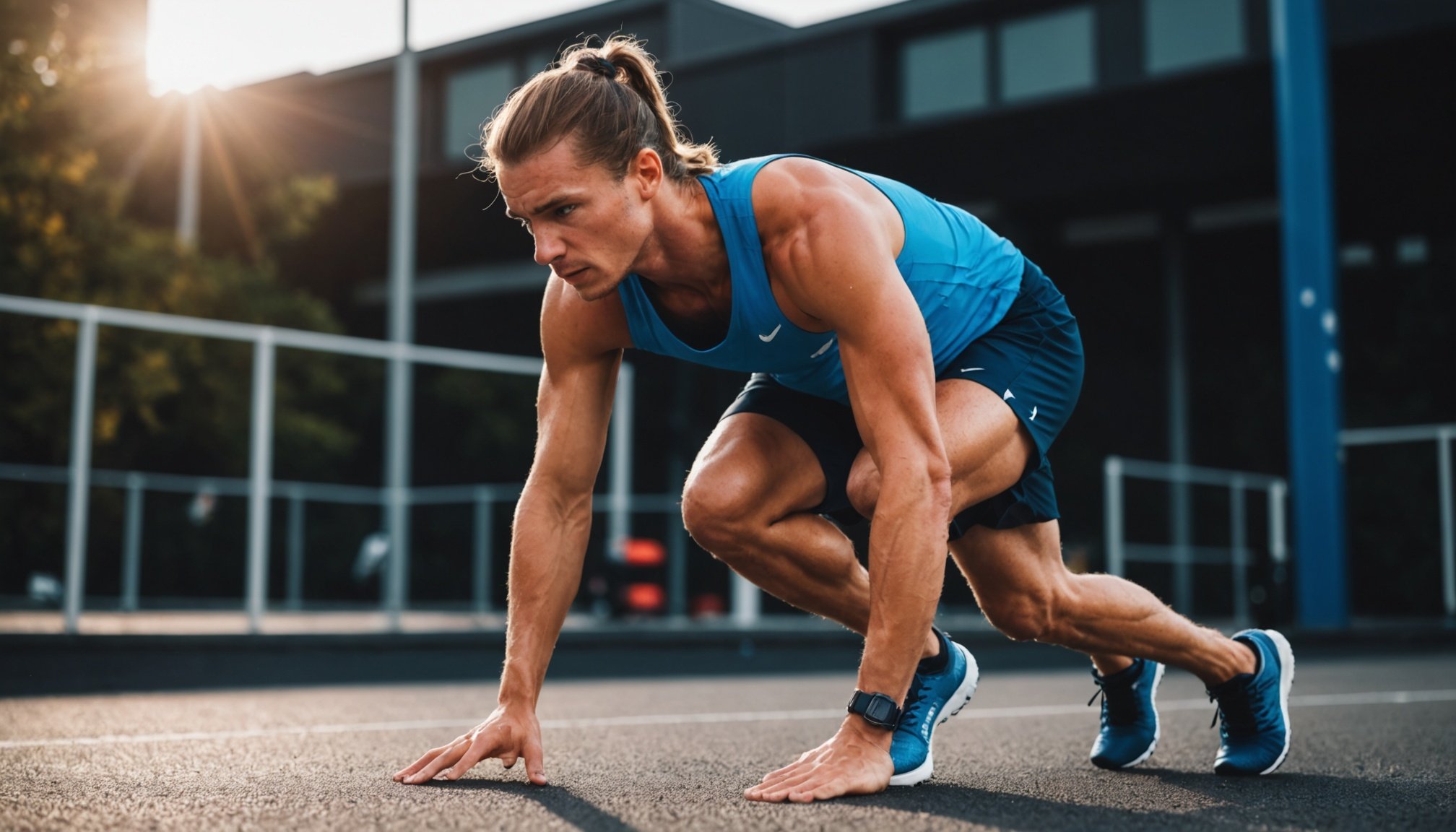Ultimate Guide to Top Cooling Down Techniques for UK Amateur Athletes: Maximize Recovery and Performance!
Why Cooling Down is Crucial for Athletes
Cooling down, often overlooked in the hustle and bustle of training and competition, is a critical component of any athlete’s routine. It is essential for UK amateur athletes to understand the importance of cooling down to maximize their recovery, prevent injuries, and enhance overall athletic performance.
When you engage in high-intensity exercise, your body undergoes significant stress. Your heart rate increases, your muscles work harder, and your blood flow is redirected to meet the demands of the activity. Cooling down helps your body transition back to a resting state, reducing the risk of injury and promoting muscle recovery.
In the same genre : Discovering the Mental Health Perks of Urban Community Gardens in the UK
The Science Behind Cooling Down
Cooling down involves a series of exercises and techniques designed to gradually reduce your heart rate, lower your body temperature, and stretch your muscles. Here’s a breakdown of what happens during the cool-down process:
Reducing Heart Rate and Blood Pressure
After intense exercise, your heart rate and blood pressure are elevated. Cooling down helps to gradually bring these back to normal levels, reducing the strain on your cardiovascular system.
This might interest you : Unlocking Relaxation: Evaluating Acupuncture”s Impact on Stress Relief Across the UK
Improving Blood Flow
Cooling down exercises, such as light cardio and stretching, help maintain blood flow to the muscles. This is crucial for delivering oxygen and nutrients to the muscle groups that were active during the exercise, aiding in muscle recovery and reducing muscle soreness.
Preventing Injury
Injury prevention is a key benefit of cooling down. By stretching and mobilizing your joints, you improve your range of motion and reduce the risk of muscle strains and other injuries.
Effective Cooling Down Techniques
Here are some of the most effective cooling down techniques that UK amateur athletes can incorporate into their routine:
Light Cardio
- Jogging or Walking: Finish your training session with 5-10 minutes of light jogging or walking. This helps to gradually lower your heart rate and maintain blood flow.
- Cycling: If you are in a gym setting, using a stationary bike at a low resistance can be an excellent way to cool down.
Static Stretching
- Hamstring Stretch: Stand with your feet shoulder-width apart, then bend forward at the hips to stretch the back of your legs.
- Quad Stretch: Stand with one hand against a wall for balance, lift one leg behind you, and grab your ankle with your hand to stretch the front of your leg.
- Chest Stretch: Stand in a doorway with your hands on the doorframe at shoulder height. Lean forward until you feel a stretch in your chest.
Dynamic Stretching
- Leg Swings: Stand with your feet hip-width apart and swing one leg forward and backward, then switch to the other leg.
- Arm Circles: Hold your arms straight out to the sides and make small circles with your hands.
- Hip Circles: Stand with your feet together and your hands on your hips. Move your hips in a large circle, first clockwise and then counterclockwise.
Foam Rolling and Self-Myofascial Release
- IT Band Roll: Lie on your side with the foam roller under your IT band (the outside of your thigh). Slowly roll the foam roller up and down, applying pressure to release tension.
- Quad Roll: Lie on your stomach with the foam roller under your quadriceps. Roll the foam roller up and down, focusing on areas of tension.
Sample Cool Down Routine
Here’s a sample cool down routine that you can follow after a high-intensity training session:
Light Cardio (5 minutes)
- Jog lightly around the track or on a treadmill.
- Alternatively, use a stationary bike at low resistance.
Static Stretching (10 minutes)
- Hamstring Stretch: 3 sets of 30 seconds per leg.
- Quad Stretch: 3 sets of 30 seconds per leg.
- Chest Stretch: 3 sets of 30 seconds.
- Calf Stretch: Stand facing a wall with one foot back about a foot. Bend the front knee and lean forward until you feel a stretch in your calf. 3 sets of 30 seconds per leg.
- Hip Flexor Stretch: Kneel on all fours. Bring one knee forward and place your foot flat on the ground in front of the other knee. Lean forward until you feel a stretch in the front of your hip. 3 sets of 30 seconds per leg.
Dynamic Stretching (5 minutes)
- Leg Swings: 3 sets of 30 seconds per leg.
- Arm Circles: 3 sets of 30 seconds.
- Hip Circles: 3 sets of 30 seconds.
Foam Rolling (5 minutes)
- IT Band Roll: 3 sets of 30 seconds per leg.
- Quad Roll: 3 sets of 30 seconds per leg.
Benefits of Cooling Down: A Closer Look
Cooling down offers several benefits that are essential for athletes looking to optimize their performance and reduce the risk of injury.
Reduces Muscle Soreness
Cooling down helps reduce muscle soreness (Delayed Onset Muscle Soreness or DOMS) by improving blood flow and reducing inflammation in the muscles.
Enhances Athletic Performance
Regular cooling down can improve athletic performance by ensuring that your muscles are well-recovered and ready for the next training session. This is particularly important for athletes who engage in high-frequency training.
Prevents Injuries
Cooling down reduces the risk of injuries by maintaining flexibility and range of motion. It also helps in identifying any potential issues early, allowing for prompt intervention.
Table: Comparing Cooling Down Techniques
| Technique | Description | Benefits | Duration |
|---|---|---|---|
| Light Cardio | Jogging, walking, or cycling at low intensity | Reduces heart rate, maintains blood flow | 5-10 minutes |
| Static Stretching | Holding stretches for muscle groups | Improves flexibility, reduces muscle soreness | 10-15 minutes |
| Dynamic Stretching | Moving stretches for muscle groups | Improves range of motion, reduces stiffness | 5-10 minutes |
| Foam Rolling | Using a foam roller to release muscle tension | Reduces muscle soreness, improves recovery | 5-10 minutes |
| Deep Breathing Exercises | Controlled breathing to relax the body | Reduces stress, improves recovery | 5-10 minutes |
Practical Insights and Actionable Advice
Here are some practical tips to help you integrate cooling down into your training routine effectively:
Make it a Habit
- Incorporate cooling down into your training sessions as a non-negotiable part of your routine.
- Start with shorter cool-down sessions and gradually increase the duration as you become more comfortable.
Listen to Your Body
- Pay attention to your body and adjust your cool-down routine based on how you feel. If you are particularly sore or fatigued, you may need to spend more time on certain stretches or foam rolling.
Use the Right Tools
- Invest in a good quality foam roller and other stretching tools to help you cool down more effectively.
- Consider using heart rate monitors or fitness trackers to track your heart rate and ensure it returns to a normal level during the cool-down.
Stay Hydrated
- Ensure you are well-hydrated during and after your cool-down. This helps in maintaining blood flow and supporting muscle recovery.
Quotes from Experts
-
“Cooling down is just as important as the training itself. It helps in reducing muscle soreness and improving recovery, which is crucial for consistent performance,” says Nick Bare, a fitness expert and athlete.
-
“The Wim Hof breathing method, while not directly a cool-down technique, can be used in conjunction with cooling down to enhance recovery and reduce stress. However, it’s important to approach it with caution and under proper guidance,” notes an article on the Wim Hof method.
Long-Term Benefits of Cooling Down
Cooling down is not just beneficial for immediate recovery but also has long-term benefits for athletes.
Strength Conditioning
Regular cooling down can help in maintaining muscle strength and conditioning over the long term. By ensuring that your muscles are well-recovered, you can maintain a consistent training load without risking overtraining.
Injury Prevention
Consistent cooling down reduces the risk of chronic injuries by maintaining flexibility and range of motion. This is particularly important for athletes who engage in high-impact sports.
Enhanced Sports Performance
Cooling down is a key component of a systematic approach to sports performance. By ensuring that you recover well, you can perform at a higher level consistently, which is essential for achieving long-term athletic goals.
Cooling down is an essential part of any athlete’s training routine, offering a range of benefits from reducing muscle soreness and preventing injuries to enhancing athletic performance. By incorporating the techniques outlined above into your routine, you can ensure that you recover effectively, perform at your best, and maintain a healthy, active body.
Remember, cooling down is not just about the immediate benefits; it’s about long-term health and performance. So, take the time to cool down after every training session, and you’ll see the difference it makes in your overall athletic journey.











